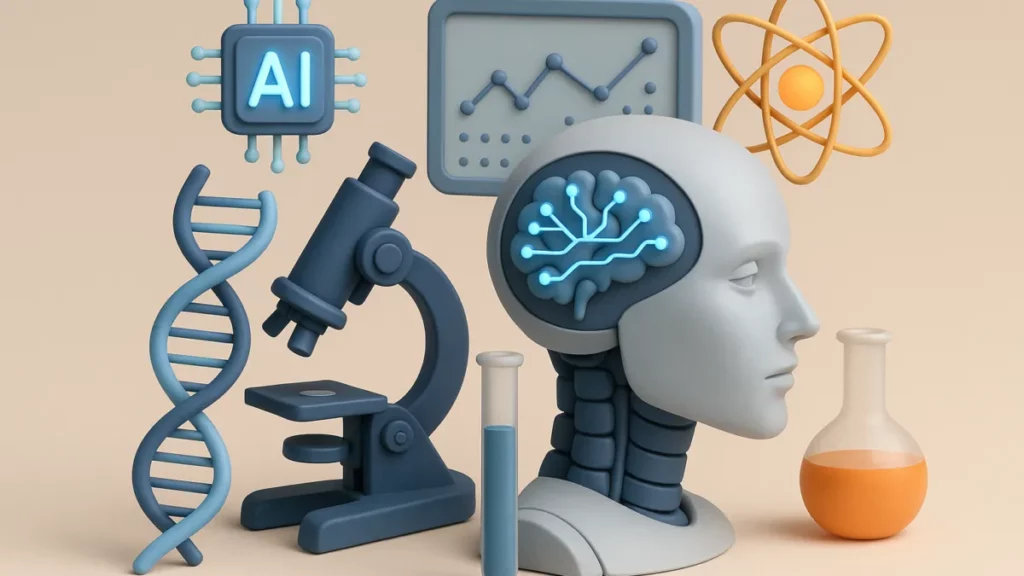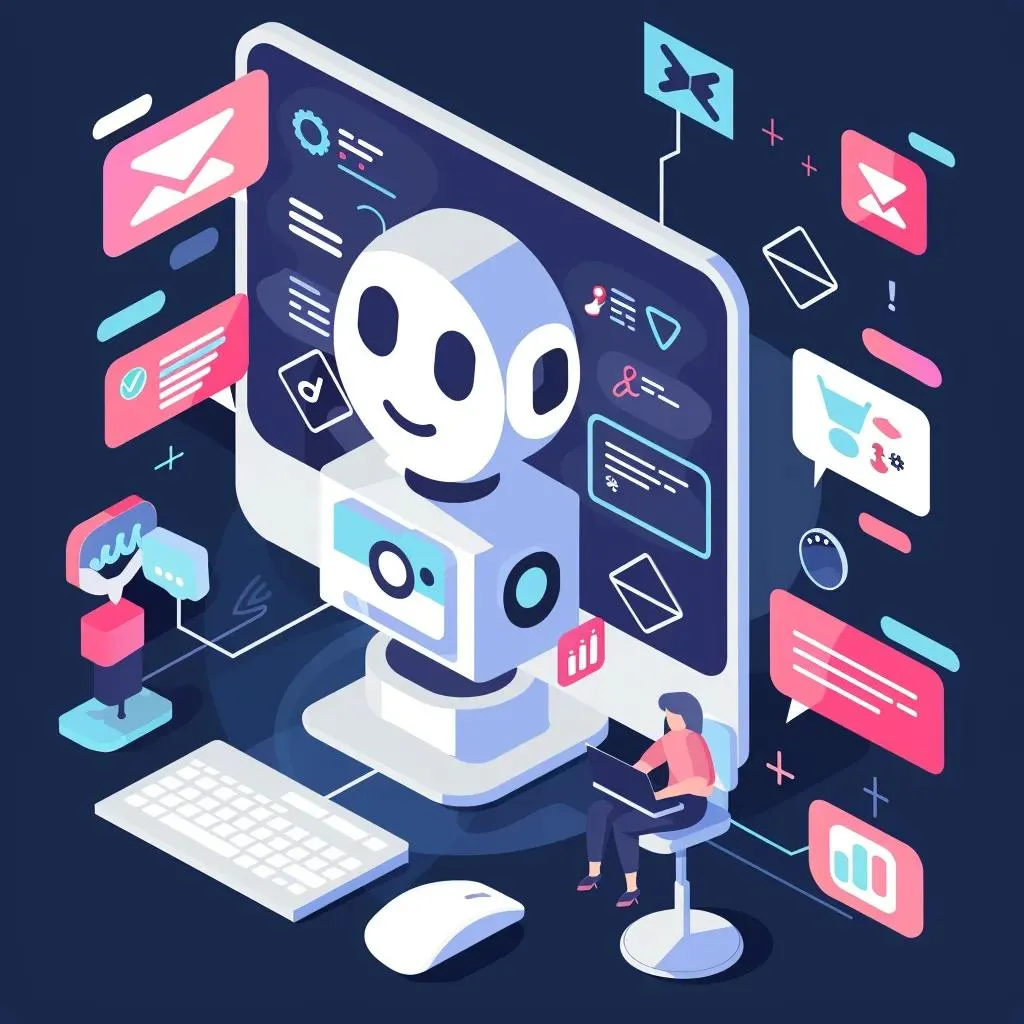The concept of artificial intelligence is not new (since the 1950s). Conventional AI systems apply fixed rules and labeled data to automate tasks and make decisions. Generative AI, in its turn, is a more recent technology that is capable of generating original text, images, and code. Understanding generative AI vs ai (traditional AI) helps in choosing the right tools. This paper describes each of these methods and demonstrates how to select the appropriate one to use in various tasks.

What Is Traditional AI?
Traditional AI (also called narrow AI) uses algorithms and rules to perform specific tasks. It is generally based on guided learning. These models are trained on large labeled datasets by engineers in order to detect patterns. An example is that a standard AI model may learn on thousands of labeled images to identify objects, or historical data to identify fraud. Traditional AI systems are used in voice assistants such as Siri or Alexa, in recommendation engines on Netflix or Amazon, and in search engines such as Google. These systems are automated and work by using predefined rules to perform automatic processes such as spam filtering or email sorting. Conventional AI is as good as the data it has been trained on. When new circumstances emerge, it normally requires retraining or revision of rules.

What Is Generative AI?
Generative AI is a type of AI that involves deep learning to create new and original content. It acquires trends in massive data sets and then generates new outputs. Popular generative models are ChatGPT, Google Gemini (Bard) and DALL·E. As an example, ChatGPT is able to write coherent articles or emails based on a text prompt, whereas DALL·E is able to generate images based on a description. These models need huge training data to be effective and they can acquire intricate patterns and produce new outputs.
Consequently, generative AI is able to generate text, images, music, and code that were not previously present. It has brought numerous new opportunities in industries. As an illustration, in the medical field, generative AI is applied in the discovery of new molecules in drug development. Generative AI is becoming an increasingly popular investment area – by 2024, approximately 33.9B had been raised in private investment in generative AI tools.
What Are Key Differences Between Generative AI vs Traditional AI?
| Aspect | Traditional AI | Generative AI |
| Objective | Automate predefined tasks and make predictions. | Create new content and data based on learned patterns. |
| Data Usage | Trained on structured, labeled data. | Learns from large datasets (often unstructured), sometimes without labels. |
| Output Types | Predictions, classifications, or decisions. | Novel outputs like text, images, music, designs, or code. |
| Algorithms | Rule-based logic and classic ML models (trees, regression, simple neural nets). | Advanced neural models (GANs, VAEs, Transformer LLMs). |
| Applications | Fraud detection, forecasting, search, recommendations, automation. | Content generation, design prototyping, code generation, drug discovery. |
| Flexibility | Rigid: follows fixed rules and often needs retraining for new scenarios. | Flexible: adapts to new inputs and generates diverse, creative outputs. |
| Industry Adoption | Long-established in domains like finance, healthcare, and manufacturing (78% of companies use some AI). | Rapidly growing in marketing, media, and research (65% of companies use generative tools). |
Objective and Functionality
The traditional AI is focused on accomplishing certain tasks and making data-driven decisions. It is good at information analysis, identification of familiar patterns, and forecasting results. Generative AI, in its turn, is concerned with the production of new content. It is more than an analysis to generate original outputs. To illustrate, the traditional AI may categorize an image or predict a trend, whereas generative AI may read a short description and write an in-depth article or compose a piece of art on the basis of it. It can be summed up in one source: traditional AI is supposed to do what a human being can do using intelligence (such as speech recognition or decision-making), whereas generative AI is supposed to produce new content.
Data Usage
The traditional AI uses structured and labeled data. Data should be categorized and labeled in a manner that the model would acquire precise patterns and rules. In comparison, generative AI is trained on large-scale data which can be unstructured or unlabeled. It employs unsupervised learning to find out complex patterns and subsequently employs the same information to produce new outputs. As an example, a classic image classifier requires labeled photographs of cats and dogs to be trained, but a generative image model can be trained using raw photographs and then generate completely novel photographs.
Output Types
Traditional AI generates deterministic fixed outputs depending on training. An example of this is a recommendation engine that proposes products of a given catalog depending on user activity. It does not invent things it is not aware of. Generative AI, in its turn, generates new outputs. It is able to write original text, generate new images, write music or code-content that was not found in the original data. It is simple at Microsoft: predictive AI predicts something, and generative AI creates text, pictures, code, and other output. Consequently, the generative outputs are innovative and diverse whereas the traditional ones remain in their fixed categories.
Algorithms and Architectures
Traditional AI algorithms include decision trees, logistic regression, support vector machines, and simple neural networks. These models are based on human-engineered characteristics and are optimized to perform such tasks as classification or regression. Generative AI is based on high-level neural structures. It typically uses Generative Adversarial Networks (GANs) and variational autoencoders (VAEs) to generate images or signals, and transformer-based networks (such as GPT or BERT) to generate text. As an example, GANs are trained to produce realistic new data with two neural networks simultaneously, a generator and a discriminator. Such an arrangement enables GANs to generate very realistic images and videos.

Applications
The common AI is extensively utilized in conventional fields. It drives spam filters, fraud detection engines and recommendation engines. An example is that banks are employing conventional AI to screen thousands of transactions and identify anomalies. It is applied by businesses to predict budgets and identify problems. Traditional AI can be used to automate scheduling and reminders in project management. In the manufacturing sector, it anticipates equipment breakdowns to plan maintenance. These activities are guided by definite rules and past trends.
Generative AI’s applications are newer and often creative. It’s used in content creation for marketing, media, and design. For example, generative AI can draft articles, write ad copy, or create social media graphics. Indeed, 73% of marketing departments already use generative AI for text and image generation. It is also useful in research and design: generative models can process customer data and suggest specific messages to various audiences. Generative AI is used in science to design new molecules in drug discovery. It goes to the extent of helping software developers by creating a snippet of code or documentation.
Flexibility and Creativity
The traditional AI is fixed and limited in scope. It is governed by certain rules and it normally needs retraining when the conditions vary. As an example, an AI-based customer support system based on rules may require human intervention to process new requests. Generative AI is made more flexible and inventive. It can generate flexible outputs despite new inputs because it learns directly by patterns of raw data. As an example, a language model that is trained on a variety of texts can produce coherent text on a new subject without additional programming. This is why generative AI is particularly applicable to creative work and fast-evolving areas.
Industry Adoption
Traditional AI has been established in industries. Research conducted surveys that revealed that approximately 78 percent of organizations were utilizing some type of AI by 2024. Finance, healthcare, and manufacturing companies have been using predictive and analytical AI for a long time.
The use of generative AI is increasing at a very rapid pace. In 2024, a survey conducted by 65% of organizations reported that they were actively using generative AI tools, compared to approximately a third the previous year. Such products as ChatGPT have become ubiquitous: as an example, ChatGPT had more than 800 million weekly users in late 2024. According to industry reports, 92 percent of Fortune 500 companies are currently utilizing the technology of OpenAI or other generative tools. These numbers demonstrate that generative AI is quickly gaining ground and will probably become one of the most important aspects of business strategies in the future.
When to Use Generative AI or Traditional AI
Choosing between generative AI and traditional AI depends on the task. Each excels in different situations:
When to Use Generative AI
- Creative content generation: Generate original text, images, or designs. For example, use generative AI to draft articles, ad copy, or artwork.
- Personalization and variation: Produce customized content for many users. Generative AI can quickly generate variations of a design or message.
- Data synthesis: When real data is scarce, use generative AI to create synthetic datasets or simulate new scenarios.
- Ideation and prototyping: Brainstorm new ideas or concepts. Generative AI can propose product designs, code snippets, or storyboards to spark innovation.
- Complex summarization: Produce concise overviews of large information. For instance, Google notes generative AI can “accelerate research and summarize lengthy information” for marketing and analysis.
Generative AI is best when you need something new or creative that goes beyond existing data.
When to Use Traditional AI
- Predictive analytics: Forecast trends or classify data. For example, use traditional AI for credit scoring, risk assessment, or demand forecasting.
- Process automation: Automate routine, well-defined tasks. Examples include spam filtering, scheduling, or inventory management.
- Critical decision support: When accuracy and consistency are paramount (medical diagnosis, quality control, compliance).
- Structured problems: If the inputs and outputs are well-defined and stable, traditional AI provides reliable results.
- Resource constraints: When data or compute power is limited, simpler traditional models may be more practical.
Traditional AI is ideal when the task is clearly understood and requires precise, predictable outcomes.
When to Combine Both
Generative AI and traditional AI tend to complement each other. A hybrid system can be based on traditional AI analysis and generative AI content creation. As an example, a retailer can use traditional AI to process customer data and predict trends and then use generative AI to create personalized marketing emails. Likewise, a chatbot support system might apply classic AI to categorize user intent and generative AI to write natural, useful responses. According to one source, generative AI may be used in collaboration with traditional AI, e.g., traditional AI examines user data and generative AI uses the analysis to generate individual content.

FAQs on Generative AI vs Traditional AI
Is Generative AI Part of Traditional AI?
Generative AI is an artificial intelligence, but not the conventional AI. Older rule-based or narrow-focus systems are typically called traditional AI. Generative AI is a more recent branch, which generates new content based on data. That is, generative AI is an AI subcategory, but it is not a traditional (narrow) AI.
Can Traditional AI Do What Generative AI Does?
No. Generative AI is able to create original content in a manner that traditional AI is not. Traditional systems are based on predetermined algorithms to analyze or categorize data, and they yield results through the training only. Generative AI, in its turn, is able to generate completely new text, images, or other media. According to one source, generative models are capable of doing what traditional AI cannot. Practically, a classic chatbot may provide a pre-written response, but a generative chatbot will write a specific response in real-time.
Will Generative AI Replace Traditional AI?
Unlikely. There are strengths of each form of AI. The classic AI is good at rule-based, structured tasks. Generative AI is good at creative work. According to industry analysts, the generative AI will not be able to replace traditional AI in every application. Rather, the two methods are usually complementary. The majority of systems will remain to combine: traditional AI to process the data and generative AI to generate the creative. By doing so, each is able to complement the other.
Conclusion
At Designveloper, we’ve spent over 10 years crafting web, mobile, and AI-powered software solutions for more than 200 clients across 15 countries. Throughout our work in e-commerce, fintech, and enterprise SaaS, we’ve seen first-hand how the choice between generative AI and traditional AI matters.
When a major retail client engaged us to build a customer-segmentation engine, we leveraged traditional AI to analyze millions of purchase records and predict buying patterns. Later, for a healthcare start-up, we applied generative AI techniques to synthesize patient-education materials and streamline content creation. These real-world projects taught us that both approaches have their place, and that the sharp distinction between “generative AI vs AI” isn’t just academic; it influences outcomes.
We believe the right approach depends on your goal. If you need reliable classification, prediction, or automation at scale, traditional AI remains the proven backbone. If you aim to generate custom content, customize user experiences, or design creative outputs that did not exist before, generative AI is the route forward.


